
Fly fishing for Walleye is an exhilarating activity that comprises skillfully throwing your line, anticipating the moment it makes contact with the water, and experiencing the adrenaline rush when you secure a catch. It might be a tricky task for novices, yet seasoned fishers thrive on this challenge. The game isn’t merely enticing the Walleye to take the bait but also about triumphantly pulling them in.
Walleye fish are famous for their picky behaviour and sharp sight, which helps them survive in cloudy waters. These traits make them interesting but challenging for fly fishers. However, if you fish correctly, catching these golden-eyed fish can feel like a smooth dance between the fisher and the fish. This dance involves skill, method, gear, and knowledge. So, prepare your fishing equipment; let’s explore the exciting activity of fly fishing for Walleye.
Understanding Walleye and Fly Fishing
The allure of the Walleye fish, renowned for its distinctive taste and behaviour, makes it a prime catch among fishing enthusiasts. Introducing fly fishing into this equation heightens the excitement. This method of fishing turns into an enjoyable puzzle for Walleye lovers as it demands a meticulous game plan and a direct approach. It’s more than just casting bait into the water; it’s about artfully deceiving the fish and demonstrating patience.
Here’s a simpler way to understand this: We can learn a lot about walleye fish by fly fishing. Walleyes are known for feeding at night and staying deep underwater during the day. Fly fishing makes us adjust our skills – like reading water ripples and understanding currents – while also making accurate casts to reach where walleyes are. This isn’t just fishing; it’s combining science with the basic hunt of predator and prey.

Basics of Walleye Biology
Fishing lovers are often fascinated by the interesting secrets of Walleye fish. Walleye are more than fish you can catch on your line; knowing their biological secrets can help you fish better. Their special changes not only make them a top choice for anglers but also help them survive in different freshwater environments.
Walleyes have interesting feeding habits. They eat most during twilight, using their shiny eyes to see in low light. This is why they’re most active at dawn and dusk. Their nighttime habits make them a fun challenge for fishermen. So, when you go fly fishing next time, remember that understanding their underwater life is key.
Introduction to Fly Fishing Techniques
Fly fishing is much more than simply throwing a line in the water. It’s a strategic game against fish. Using special fly techniques for Walleye fishing can make it even more exciting. You start by learning simple methods like the overhead cast and roll cast. But soon, you’ll be doing more complex moves like Spey casts or double hauls.
Being good at pretending your bait is real prey is important when fly fishing for walleye. It can make a fun day at the lake even better. Each time you move your wrist, it makes your line move, and your bait looks like it’s alive. This can lure even the shyest walleye out from where it’s hiding. But remember, catching walleye is like playing chess. You need a good plan, you need to keep trying, and most importantly, you need a lot of patience.
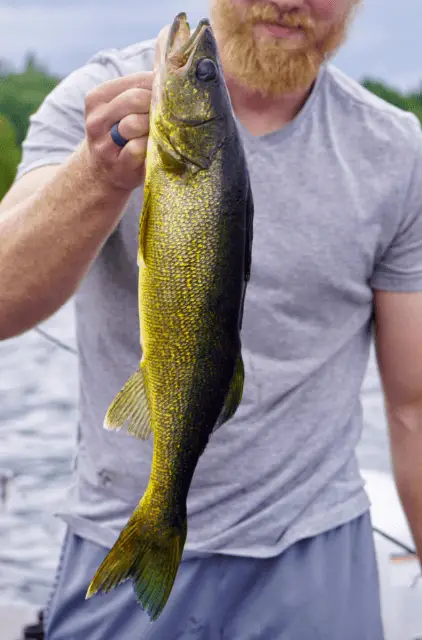
Ideal Fly Fishing Gear for Walleye
Selecting the correct fly fishing equipment for walleye, a type of fish known for its strong appetite and tough fight can greatly improve your fishing skills and enjoyment. It’s not just about having a regular rod and reel. It’s about using gear specifically made to outwit this smart fish.
Shorter rods between 6 to 7 feet are great for casting flies that look like the small fish walleyes eat. Choose reels with a good drag system to handle the fast movements walleyes are known for. Your fly lines should mostly be sinking tips or full sinking lines because walleyes live at the bottom. Use a strong wire leader because walleyes have sharp teeth that can cut regular monofilament leaders.
Finally, having a variety of brightly coloured streamer flies is helpful because walleyes have good vision. While matching the hatch isn’t necessary, like in trout fishing, copying baitfish can attract more bites.
Choosing specific equipment can help you manage your sport better, even though some might ignore this as not important. But these small changes can increase your chances of success and change the way we understand fly-fishing for Walleyes.
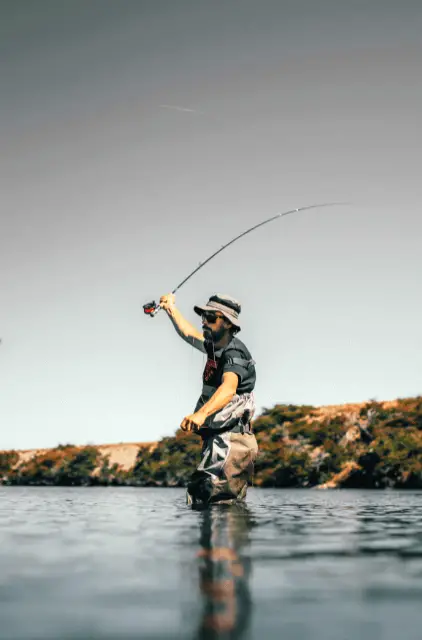
Best Seasons and Locations for Walleye Fishing
It’s crucial to familiarize yourself with prime times and locations when organizing your fly fishing expeditions for Walleye. Regardless of your geographical location, spring and autumn are typically the most fruitful seasons for catching these fish. During the springtime, walleyes are commonly located in the shallow parts of rivers or lakes with sandy or gravelly bases as they prepare for spawning. Conversely, as autumn arrives and temperatures drop, these fish gravitate towards deeper shallows in search of food.
Fly fishing for Walleye is a unique experience, especially in areas abundant with baitfish. These spots draw a considerable number of walleyes, making them ideal for fishing enthusiasts. A prime example of such a place is Lake Sakakawea in North Dakota. Its vastness and high-quality waters teeming with food make it a hot spot for these fish. Another notable location is the Upper Mississippi River, where its numerous dams create serene water zones that walleyes find irresistible. It’s an exciting destination for fly-fishing lovers in pursuit of an exhilarating catch.

Tips and Tricks for Successful Walleye Catch
The weather is crucial for successful walleye fishing. Walleyes are more active and feed more on cloudy days. So, don’t wait for clear skies; fish when it’s overcast. A good tip for these conditions is to use dark-coloured flies. They stand out against the dark sky, making it easier for the fish to see them.
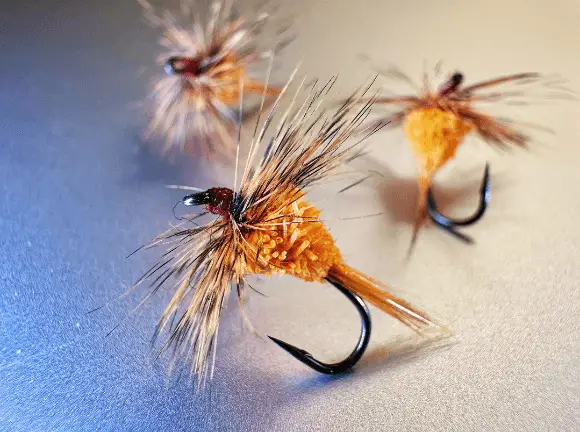
Walleyes possess an excellent sense of smell, so using scented baits could be your golden ticket to a successful catch. Add some extra allure by opting for bait styles like jigs and swimbaits that create vibrations in the water as they move – this can prove irresistible for these predatory fish prowling at dusk. Remember: mastering success with Walleye is just as much about finesse and creativity as it is about patience and persistence in those waters.
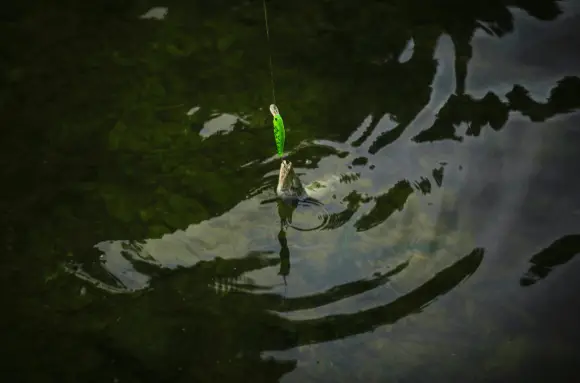
Common Mistakes to Avoid When Fly Fishing
Fly fishing for walleye can be less fun if you make common mistakes, which can lead to a boring fishing trip. One common error is using the wrong fly pattern. Walleyes are picky eaters with specific tastes. If you use a diet-based approach instead of choosing randomly, you might have better luck. Researching local food sources will help you imitate their favourite food accurately, which can greatly increase your chances of catching a walleye.
Don’t forget about wind direction and light conditions – they really affect how walleyes behave. Walleyes usually go deeper in the day and come to shallow waters after sunset or when it’s cloudy. If you fish without thinking about these changes, you’ll end up frustrated. Pay attention to the weather and plan your fishing trip around it. Your fishing trip will be much more enjoyable.
Conclusion
Walleye fish continue to captivate many anglers due to their intriguing behaviour and savoury taste. The integration of fly fishing has significantly amplified the thrill and challenge of catching these sought-after species. This combination not only tests one’s patience and skills but also enhances the overall fishing experience.
Regardless of whether you’re a seasoned fisherman or just starting, giving fly fishing for Walleye a shot is unquestionably worthwhile. So, gather your equipment, make your way to the nearest lake, and directly immerse yourself in this extraordinary fusion of outdoor sport and natural beauty.
FAQs
Q. What makes Walleye a popular catch for anglers?
A. Walleye are known for their elusive habits and distinctive taste, making them a challenging and rewarding catch.
Q. Is there a specific time of day best for catching Walleye?
A. Walleye are typically more active during dawn and dusk, which is often referred to as the ‘Walleye chop.’
Q. What type of fly is effective when fishing for Walleye?
A. Streamer flies that mimic baitfish tend to be very effective when targeting Walleye.
Q. Are there certain conditions that make it more likely to catch Walleye?
A. Overcast days or murky water conditions can increase your chances of catching walleyes, as they prefer low-light conditions.
Q. Where in the water column do Walleyes typically reside?
A. Walleyes are usually found near the bottom of lakes and rivers since they prefer cooler water temperatures.
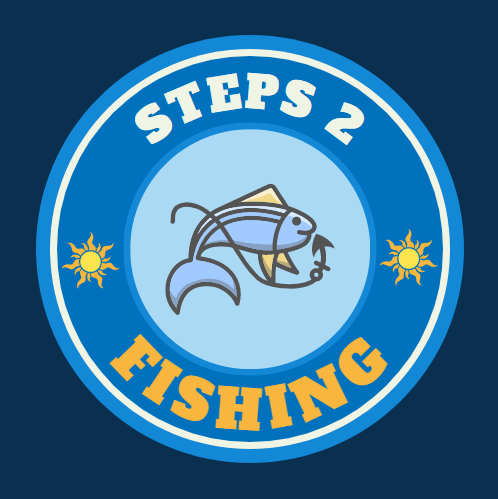

Leave a Reply